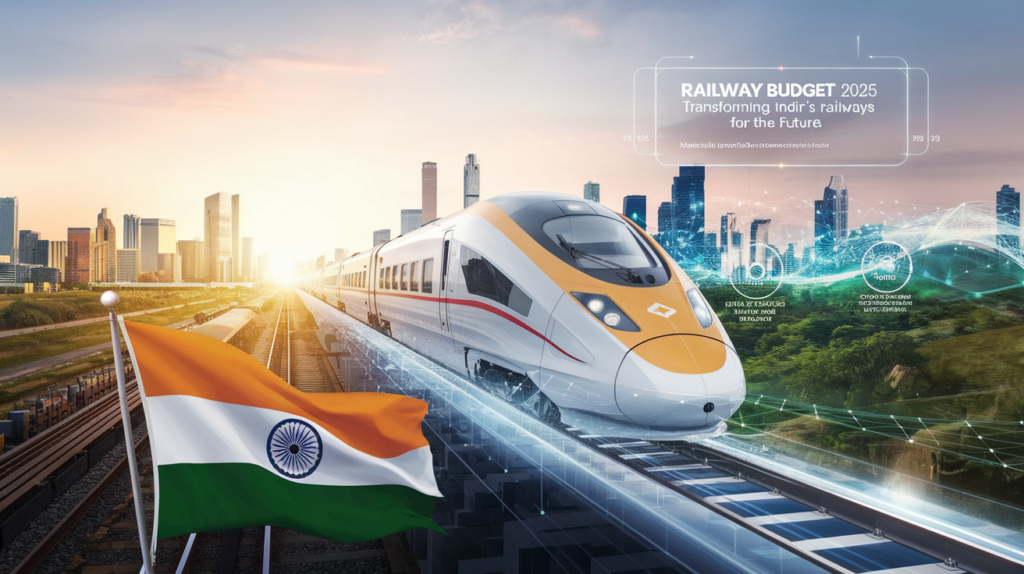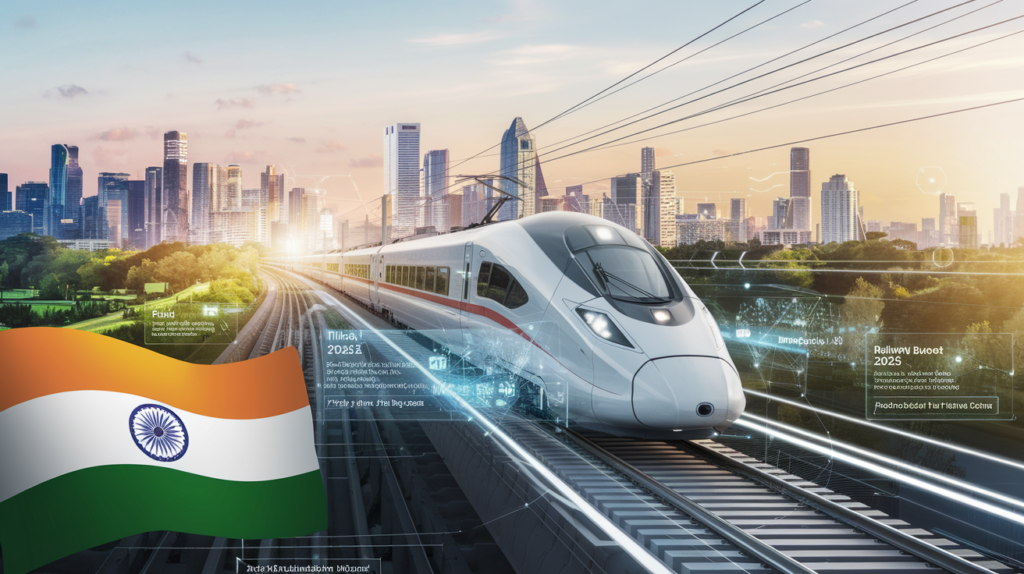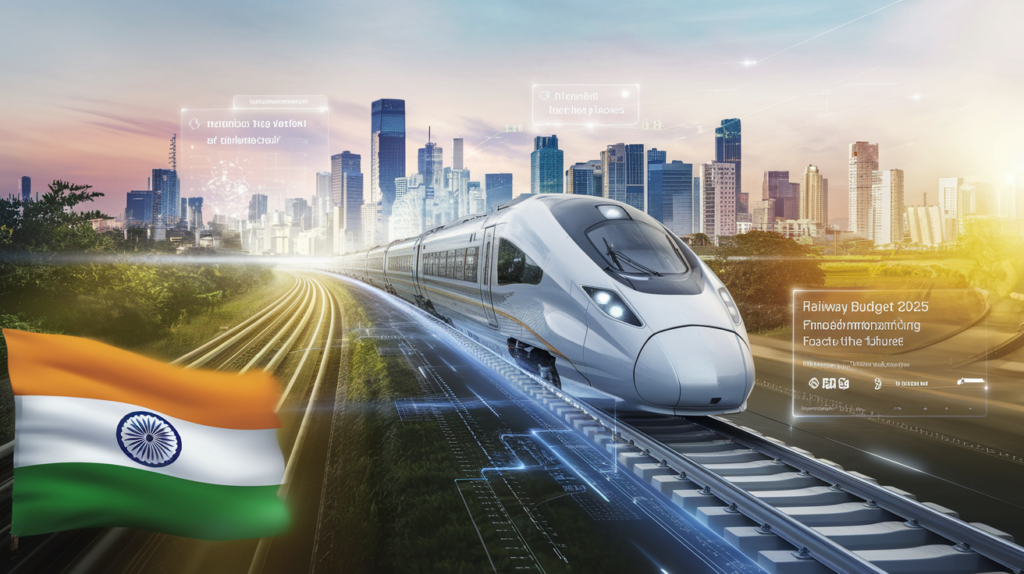
Railway Budget 2025: Modernizing Indian Railways for Tomorrow
The Indian Railway Budget 2025 is set to start a fresh chapter for one of the biggest railway networks globally. Expectations this year are high with regard to upgrading trains and railway stations, introducing eco friendly initiatives, and taking ambitious steps with infrastructure development. The effective and secure utilization of the budget increases accessibility of the rail system to even more people. Our attention is therefore drawn towards the Railway Budget of 2025. Let’s examine how this will impact our country and people.
Allocation of resources on development, and crucial infrastructure: Railway Budget 2025
This Railway Budget 2025 is not just a financial view for the railways but also a strategic plan on how the vast railway network in India will need to be transformed in the future. India Railways is not just the lifeline of over a million of passengers everyday, it is core to the economy of the country. As the network grows and becomes advanced, the budget will have to focus on greatly on the issues such as efficiency, safety, and modernizations.
Passenger and freight services are likely to expand, as will the investment in new technologies including sustainability goals. The budget will commercially enhance technological infrastructure in eco-friendly manners to Indian Railways, making it more efficient and reliable than before. Railway Budget 2025: Modernizing Indian Railways for Tomorrow
Push for Vande Bharat Trains and Modernization of Trains
The next Indian Railway budget in the year 2025 is going to be exciting since it marks the launch of the Vande Bharat semi-high speed trains. These add new features such as automatic doors, enhanced passenger facilities, and improved safety systems. The step forward aids the goal of future-proofing Indian Railways. The scale of production is likely to be increased so that the service can be used by different routes across the nation.
Development of Vande Bharat trains will make private and international services less appealing by providing speed, comfort, and safety as an added bonus. Moreover, plans to launch more technologically superior trains, including autonomous locomotives in specific corridors, may be in the works as well.
Upgraded Stations and Enhanced Passenger Facilities
The Railway Budget 2025 outlines the modernization of railway stations as one of its key features. The majority of Indian stations, in particular those in remote and semi urban areas, tend to be deficient in basic amenities and in need of updating. The expectation is that at least a modest amount will be Budgeted in this allocation to upgrade these types of stations to meet the expectations of today’s traveler. Railway Budget 2025: Modernizing Indian Railways for Tomorrow.
Targeted efforts will be made to broaden the scope of free Wi-Fi usage and charging points, as well as expand waiting facilities, in order to improve accessibility and cleanliness. Also, the initiative of ‘One Station, One Product’ is a welcome move that augurs well for the passengers as well as the local economy, as it is aimed at enhancing the local economy by promoting regional crafted and produced goods.
Increased Safety Measures: Modern Technologies And Systems
Safety is one of the major focus areas for Indian Railways. The 2025 budget is aimed at the modernization of safety technologies and is expected to allocate funds for the Kavach systems: India’s automatic train protection system to help prevent collisions. In addition to Kavach, the budget will first of all look at the installation of new signaling systems, increasing the electrification of routes, installing AI based technology to monitor the tracks condition, and trust the safety of the system to these new measures. Railway Budget 2025: Modernizing Indian Railways for Tomorrow.
There are efforts being made like the government intending to put such things into play so that employing these safety measures will ensure a dramatic drop in the number of accidents while increasing the overall safety and reliability of the railway systems due to myriads of challenges present while ensuring the safety of the routes with over 68,000 kilometers of railways.
Sustainability in Railways: Achieving Net-Zero Emissions by 2030
It is worth mentioning that Indian Railways is expecting to achieve net zero carbon emission by 2030 and and achieve carbon neutrality through investments like installation startion-solar and wind energy projects. A significant amount of the money allocated from the 2025 Railway Budget will be direcly used on this target. Furthermore, these plans are part of the wider climate change commitment from the Indian government.
In a bid to further the sustainability of the railways, it is essential to further focus on electrification. With already over 80% of the networks electrified, there is a potential for further extension of the electrified routes which will enable a drop in the fossil fuel dependency of the Railways. Additionally, there will be greater focus on researching for other alternative fuels like the Hydrogen powered trains reducing fossil fuels even more.
Improving Regional Transport Links and An Increase in the Railway Infrastructure
There is a great deal of focus on projects like the bullet train between Mumbai and Ahmedabad, but it is also likely that the Railway Budget 2025 will pay attention to improving regional raial connectivity. This includes the improvement of rail services in remote regions and the expansion of coverage in less accessible areas of certain states.
The budget will most likely include the construction of new lines, as well as the development of already existing ones, in order to ease congestion on already established major lines. There may also be some increase in funds for metro rail systems in cities like Bengaluru, Chennai, and Hyderabad which will ease urban commuters as well as traffic congestion.
Railway Cargo Infrastructure: Economic Growth
Indian Railways has a major focus on freight movement. As one of the largest economies of the world, fast consumption of commodities is pivotal for development. One of the foreseen tasks for the Railway Budget 2025 is the investment to upgrade freight corridors, logistics infrastructure, and develop the digital infrastructure for the management of freight.
More and more emphasis is being places on the moving of goods by rail as a replacement for road transport to reduce traffic congestion, pollution, and logistical expenditures. Digital solutions will further aid as they simplify the tracking of freight and the cramped road logistics will make the dedicated freight corridors an essential.

Development and Technological Integration in Railways
Under the “Make in India” campaign, the Railway Budget 2025 will probably target the promotion of local companies to produce railway parts and rolling stock. In developing the economy of railways, investments in technology and innovation will be the most important for improving operational efficiency and reducing maintenance costs in the long run.
There will be an increase in the production of freight wagons, passenger coaches and locomotives which will lead to more job opportunities. In addition, foreign and local manufacturers will partner which will stimulate progress in energy efficiency, automation and more technologically advanced areas.
Areas to Focus on for Investment in Railway Budget 2025
Electricity network extension and integration of solar energy to the wind power will be key area investments for the Railway Budget 2025.
The remaining includes: The Expansion of Digital ticketing, reservations and real-time tracking systems, incorporation of automated safety systems and signaling technologies for better passenger safety and the construction of expansion and modernization of supporting infrastructure such as new and old stations together with the railway.
Concentrating on Electrification and Renewable Energy Development Efforts
It is necessary to advance electrification of modes of railway transportation to decrease greenhouse gas emissions as well as reduction in fossil fuels usage. The Indian government has committed to complete electrification of all railway lines by 2030. This guarantees that train and airport energy systems will be self-sufficient. This assist scheme will be supplemented by renewable energy investment.
The Role of Private Sector in Railway Development
The modernization and expansion of Indian Railways is going to need substantial private sector involvement. There is a good chance that the government will allocate more public-private partnership (PPP) opportunities which will encourage private sector investment into infrastructure and rolling stock acquisition.
Impacts of Budget 2025 on Employment and Skill Development
The expansion of the rail network will ensure new employment opportunities in construction, development, and even in maintenance of machines. There might also be some funds in the 2025 Railway budget for training in modern skill sets to make such a workforce readily available.
Accessibility for All: Inclusive and Equitable Railway Services.
This is a delicate situation since the rural and marginalized communities have almost no accessibility to the facilities provided by the railways. In ensuring these populations derive benefit from the growth of the railways, we will make available the existing facilities, for instance we will broaden the accessible train services for disabled people and affordable train services for low income groups.
Public-Private Partnerships and Their Role Modernization of Railways
It is anticipated that the development of railway infrastructure will increasingly be undertaken using public-private partnerships (PPPs). It is expected that the budget will come up with some incentives to the private sector to invest in the railway industry such as investment in station, train operation, and freight corridors.
Challenges and Opportunities Ahead for Indian Railways
The wideranging scope of the Railway Budget 2025 comes with a number of challenges including effective implementation, proper funding, and the logistical challenges associated managing a railway system of such magnitude. While it is a challenge, the Indian Railways will be critical in the development and sustainability of the nation provided there is investment in the right areas.
Conclusion: The Road Ahead for Indian Railways
The Railway Budget 2025 is very much critical in efforts to make Indian railways a modern and effective network. If treated with proper innovation, sustainability, and inclusivity, the budget has the capacity to change rail travel in India for the better. Because the government intends to invest more resources into both passenger and freight services, the Indian railways clears a bright prospect in helping the country achieve its economic and environmental goals.
Related To Railway Budget 2025

What are the key priority issues for the Railway Budget 2025?
The budget will concentrate towards modernization, sustainability, safety, and the efficiency of the railway network.
Is it expected that the Vande Bharat Trains will be more common in 2025?
Yes, expansion of the Vande Bharat train fleet is expected which will provide faster, safer, and more comfortable travel.
What steps will be made towards sustainability for Railway Budget 2025
From the budget there is an expectation to achieve net zero emissions by 2030 through electrification and renewable energy investment.
What other improvements are anticipated from the Railway Budget 2025 for the passengers?
Better amenities, modernized stations, and improved safety systems in trains are what passengers can look forward to.
In which manner will the budget enhance the regional connection?
There will be funds allocated to extend railway lines to less serviced areas, which will enhance connectivity and create economic opportunities.
Is it true that the private sector will be involved in the growth of Indian Railways?
Yes, the budget will most probably spell out plans to open the sector to private investment on a PPP model.